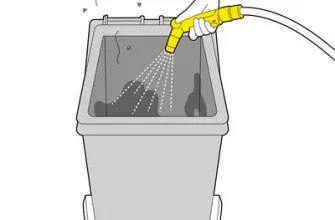
If you’re wondering how to clean your alloy wheels with ease, WD-40 is a great solution. Alloy wheels are known for their sleek and shiny appearance, but they can easily accumulate dirt, grease, and debris over time. That’s where WD-40 comes in – it’s a versatile lubrication and cleaner that can help you remove tough stains and make your wheels look brand new.
Before you start cleaning your alloy wheels, gather all the necessary supplies. You’ll need a bucket of soapy water, WD-40, a rubber wheel cleaner, a soft cloth or microfiber cloth, and a hose or jet wash. It’s also recommended to wear gloves to protect your hands during the process.
The first step is to rinse the wheels with water to remove any loose dirt and debris. Then, apply a generous amount of WD-40 to the surface of the wheel and let it sit for a few minutes. WD-40 is great for removing stubborn stains, grease, and grime.
Next, use a rubber wheel cleaner to scrub the surface of the wheel. The rubber bristles will help remove any remaining dirt or debris without scratching the surface. Make sure to clean every nook and cranny, including the spokes and inner surfaces of the wheel.
After scrubbing, rinse the wheel thoroughly with water to remove any remaining product. You can also use a hose or jet wash for a more thorough clean. Once the wheel is clean, dry it with a soft cloth or microfiber cloth to avoid water spots.
If there are any stubborn stains or grease marks that didn’t come off with the WD-40, you can use a specialist alloy wheel cleaner. These cleaners are specifically designed to remove tough stains and restore the shine of your alloy wheels.
Finally, you can apply a coat of wax or wheel sealant to protect your alloy wheels and keep them looking shiny for longer. This step is optional but highly recommended, as it helps to prevent dirt and brake dust from sticking to the surface of the wheel.
And there you have it – 10 easy steps to clean your alloy wheels with WD-40. By following these tips and using the right products, you can make your wheels shine like new and save money on expensive specialist cleaners. So, next time you wash your vehicle, don’t forget to give your alloy wheels some extra attention!
Step 1: Gather the Necessary Supplies

Before you start cleaning your alloy wheels with WD-40, it is important to gather all the necessary supplies. Here’s what you’ll need:
- A bucket of warm water
- WD-40 or a similar hydrocarbon cleaner recommended for use on alloy wheels
- A soft cloth or sponge
- Latex gloves to protect your hands
- An old toothbrush or small brush for hard-to-reach areas
- Cleaning pads or microfiber towels
- An aluminium wheel cleaner (optional)
- A wax or polish for added shine (optional)
It is important to choose the right cleaner for your alloy rims or wheels. Make sure it is safe for use on aluminium surfaces and doesn’t leave any sticky residue behind. Some experts recommend using WD-40 due to its effectiveness in removing grime and debris.
Before starting the cleaning process, it is advisable to wear latex gloves to protect your hands from any potentially harmful cleaning products or chemicals. This will also help to keep your hands clean during the process.
Having all these supplies ready will ensure that you have everything you need to effectively clean your alloy wheels with WD-40 and achieve the best possible results. Remember, using the right cleaning products and tools can make a significant difference in the outcome.
Step 2: Prepare the Wheels
Before you start cleaning your alloy wheels with WD-40, it’s important to properly prepare them. Here are the steps to follow:
- Gather your materials: Make sure you have all the necessary materials on hand before you begin. You will need a soft cloth or microfiber towel, WD-40, a rubber or nylon brush, and a wax or specialist alloy wheel cleaner.
- Start with a clean surface: Use a hose or pressure washer to remove any loose dirt, debris, and sticky substances from the wheels. This will make the cleaning process easier and help prevent scratching the surface.
- Protect other areas: To avoid any damage to your vehicle’s paintwork, use a cloth or plastic sheet to cover the surrounding areas. This will ensure that any overspray or splatters do not cause any harm.
- Apply WD-40: Spray WD-40 directly onto the alloy wheels. Make sure to cover the entire surface, paying extra attention to areas where dirt and grime are caked on.
- Let it sit: Leave the WD-40 on the wheels for about 5 minutes. This will allow the product to penetrate and loosen any stubborn dirt or grime, making it easier to clean off.
- Brush the wheels: Use a rubber or nylon brush to scrub the alloy wheels. This will help agitate the dirt and grime, making it easier to remove.
- Wipe off the WD-40: Use a soft cloth or microfiber towel to wipe off the WD-40 and any loosened dirt. Make sure to clean all areas of the wheel, including the spokes and inner rim.
- Rinse the wheels: Use a hose or pressure washer to rinse off the wheels. This will remove any remaining WD-40 and dirt residue.
- Inspect the wheels: Take a look at the cleaned wheels to ensure they are free of dirt and grime. If necessary, repeat the cleaning process to achieve the desired results.
- Dry and apply a protective coating: After cleaning the alloy wheels, make sure to dry them thoroughly using a soft cloth. To protect the wheels and enhance their shine, you may choose to apply a wax or specialist alloy wheel cleaner recommended by experts.
Following these steps will help you prepare your wheels for the cleaning process and ensure that your alloy wheels are ready for the next steps of the cleaning process. This will ultimately help you achieve better and more effective cleaning results.
Step 3: Apply WD-40
Once your alloy wheels are prepared and ready, it’s time to apply WD-40 to clean them effectively. WD-40 is a versatile cleaning and lubricating product that can be used for various purposes, including cleaning alloy wheels.
What You’ll Need:

- A bucket of soapy water
- Your chosen WD-40 product
- A cleaning brush or sponge
- A microfiber cloth
- Water for rinsing
Here’s how to apply WD-40 to clean your alloy wheels:
- Start by wearing rubber gloves to protect your hands.
- Make sure the wheels are cool before you begin working on them.
- Apply the WD-40 cleaner directly to the surface of the wheel.
- Use a brush or sponge to scrub the wheel gently, paying attention to any areas with accumulated grime or sticky debris.
- If there are any particularly difficult spots, you can apply more WD-40 cleaner to help loosen the dirt.
- Make sure to clean both the front and back of the wheels.
- Use a microfiber cloth to wipe away the dirt and grime as you work your way around the wheel.
- Continue scrubbing and wiping until the wheel is clean and free from grime.
- Rinse the wheel with water to remove any remaining cleaning solution.
- Use a clean, dry cloth to thoroughly dry the wheel.
Remember, if you’re using a specialist WD-40 product, such as WD-40 Specialist Motorbike Aluminium Wheel Cleaner, make sure to follow the manufacturer’s instructions on how to apply and use the product correctly.
By following these steps and applying WD-40, you’ll be able to effectively clean your alloy wheels and remove dirt, grime, and sticky debris. This will help maintain the appearance and longevity of your wheels, saving you time and money in the long run.
Step 4: Let It Sit
After applying the WD-40 to your alloy wheels, you’ll need to let it sit for a few minutes. This will allow the WD-40 to work its magic and loosen any dirt, grime, or grease that may be on the surface of your wheels.
The warm water and WD-40 solution will help to break down any stubborn dirt or grease, making it easier to remove later. While you wait, you can use this time to gather your cleaning tools and materials.
You’ll need a bucket of warm, soapy water, a wheel cleaning brush or sponge, and some microfiber towels or pads for drying. It’s a good idea to choose a brand of wheel cleaner that is safe for use on alloy wheels and won’t damage the paintwork of your vehicle.
As you let the WD-40 sit, it will continue to work its way into the dirt and grime on the wheels. This will make it easier to remove when you start to clean the wheels in the next step.
While the WD-40 is working, it’s important to avoid getting any of the solution on your hands or skin. WD-40 is a powerful cleaner and can cause irritation or dryness if used incorrectly. It’s best to wear gloves while handling the solution to protect your skin.
Leave the WD-40 to sit for about 3 to 4 minutes, or longer if needed. This will give the solution enough time to work its way into all the nooks and crannies of the wheels, ensuring a thorough clean.
During this time, you can also inspect the wheels to see what areas might need extra attention. Look for any stubborn dirt or grime that the WD-40 might have missed, and make a mental note to focus on those areas during the cleaning process.
Once the recommended time has passed, you’re ready to move on to the next step: rinsing off the WD-40 and cleaning the wheels.
Step 5: Scrub the Wheels
Now that you have sprayed WD-40 on the wheels to loosen the dirt and grime, it’s time to give them a good scrub. This step is essential for removing any caked-on debris and ensuring that your alloy wheels are thoroughly clean.
To scrub the wheels, you will need:
- A bucket of soapy water
- A dedicated wheel brush or a soft-bristle brush
Here’s how to scrub your alloy wheels:
- Fill a bucket with soapy water. You can use a mild detergent, but it’s best to choose a specialist wheel cleaner product recommended by experts.
- Dip your wheel brush or soft-bristle brush into the soapy water.
- Start scrubbing the wheels, focusing on the areas with the most dirt and grime. Use back-and-forth motions to agitate the debris and remove it from the surface of the rims.
- If there is stubborn grime or grease, apply some WD-40 directly onto the area. This will provide extra lubrication and help in removing the sticky residue.
- Continue scrubbing until all the dirt and grime are gone. Make sure to pay attention to every nook and cranny of the wheels, including the inner areas.
- For better results, you can also use a wheel cleaner brush with stiff bristles to remove any stubborn dirt or grime.
- Don’t forget to wear gloves to protect your hands from the cleaning products and any sharp edges on the wheels.
Once you have finished scrubbing the wheels, rinse them thoroughly with clean water. This will help remove any leftover soap or cleaner residue. Make sure to rinse the wheels from top to bottom to ensure a complete clean.
Step 6: Rinse the Wheels

After you have scrubbed all the dirt and grime off your alloy wheels using WD-40, it’s time to rinse them off. This step is essential to remove any remaining residue and to ensure that your wheels are clean and ready to shine.
To rinse the wheels, you have a few options:
- Hose with Jet Spray: If you have access to a hose with a high-pressure jet spray, this is the easiest and most efficient way to rinse off the wheels. Simply point the jet spray at the wheels and use the pressure to blast away any remaining dirt and WD-40 residue.
- Bucket of Water: If you don’t have a hose with a jet spray, you can use a bucket of water to rinse off the wheels. Dip a clean cloth or a microfiber cloth in the water and squeeze out any excess. Then, gently wipe the wheels to remove the dirt and residue.
- Pressure Washer: If you have access to a pressure washer, this can also be a great option for rinsing off the wheels. Set the pressure washer to a low setting to avoid damaging the alloy surface.
Regardless of which method you choose, make sure to rinse all parts of the wheels, including the spokes, rims, and the backside of the wheels. This will ensure that your wheels are thoroughly clean and ready to shine.
Tips:
- Wear gloves to protect your hands from any sticky residue or chemicals present in the WD-40.
- If your wheels are extremely dirty, you may need to repeat Steps 3 to 5 to ensure that all the dirt is removed.
- Use a dedicated cloth or sponge for cleaning your alloy wheels, as using the same cloth for other parts of your vehicle may transfer dirt and scratches to the wheels.
- For the best results, wash or rinse your wheels in a shaded area to keep them cool. Cleaning them when they are hot can cause the products to dry too quickly, leaving streaks and water spots.
- Remove any tar or brake dust from your wheels using the appropriate cleaners or brushes. Vinegar can also be useful for removing stubborn stains.
- Make sure to use a soft cloth, sponge or microfiber towel to avoid scratching the surface of your alloy wheels.
- Optional: Apply a wheel wax or sealant after rinsing to protect and enhance the shine of your wheels.
By following these steps, you’ll have clean and shiny alloy wheels that will help enhance the overall appearance of your vehicle. Remember to take your time and be thorough in your cleaning process to achieve the best results.
Step 7: Dry the Wheels
After cleaning the alloy wheels with WD-40, the next thing you need to do is dry them thoroughly. Drying the wheels will help prevent any water spots or streaks from forming on the newly cleaned surfaces. Here is what you can do to dry your wheels:
- Choose the right drying method: You have a few options when it comes to drying the wheels. You can either use a clean microfiber cloth, a soft towel, or an air compressor.
- If using a cloth or towel: Simply wipe down the surfaces of the wheels to absorb any remaining moisture. Make sure to reach all the nooks and crannies to ensure a thorough drying.
- If using an air compressor: This is an optional method that can be quite effective in drying the wheels quickly. Use the air compressor to blow away any water or moisture from the surfaces of the wheels. Be careful not to use excessive force, as it might damage the wheels.
It’s worth noting that drying the wheels is an important step to complete after cleaning them with WD-40. Leaving the wheels wet can lead to the formation of water spots or streaks, which can leave your wheels looking dirty again.
Remember, the WD-40 solution used in the previous step is meant to work as a degreaser and cleaner, not as a protectant or wax. If you’re looking for additional protection or shine, it is recommended to use a specialist alloy wheel cleaner or wax.
By following these steps, you can effectively clean your alloy wheels with WD-40 and restore their shine and cleanliness. It’s a cost-effective way of maintaining the look of your vehicle’s wheels and preventing the build-up of grime and grease. Just be sure to always wear protective gloves when using WD-40 or cleaning solutions, and work in a well-ventilated area.








